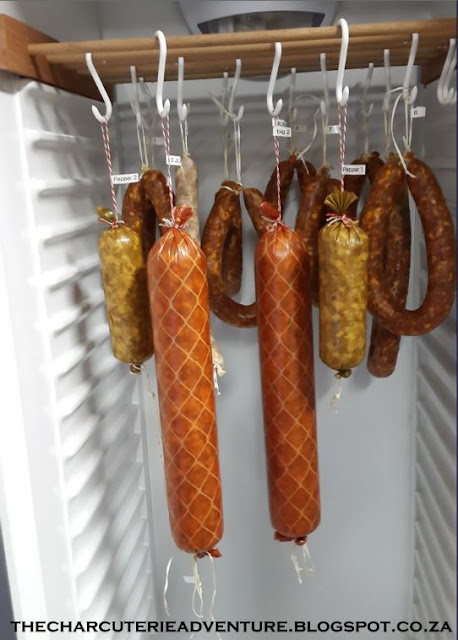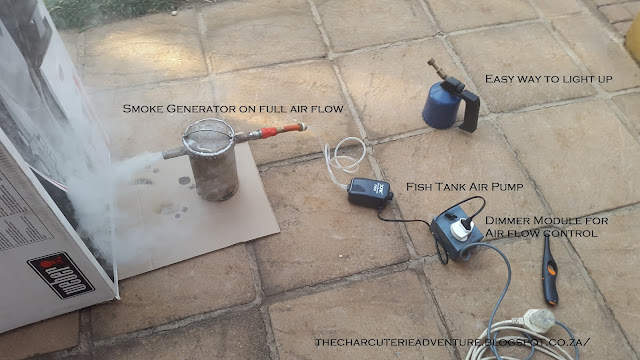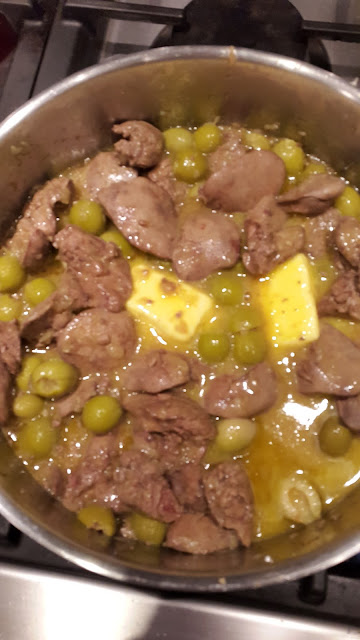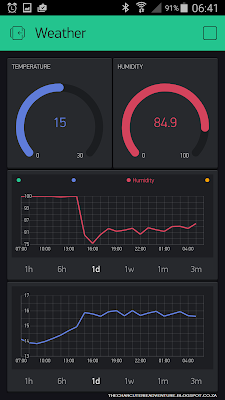Having last made a batch of cabanossi cured dried sausage two years ago it was time to do this again.
Cabanossi is a very popular South African snack. This is a variant on "Kabanos" which originates from Poland (Kabanosy -plural). It is a cured and dried sausage snack stick which is also smoked and has a wonderful flavour. Anything this rich and fattening must be good.
My first round of doing this involved making a 7kg batch using a Kenwood Chef with a mincing attachment. Although the end result come out well, this process felt like it took all day and the Kenwood got really hot. The mincing feeder (the spiral screw inside the mincer) also kept jamming up with the fat having to be stripped and cleaned and the fat got more mushed than I would have liked even being kept almost frozen.
As the flavour was so incredible I used the same mix this round. This involves the use of a Crown National Cabanossi batch pack. This includes all the spices, flavours and curing agent (Prague powder). I may make my own spice mix at some point in time but this is so delicious and easy I stuck with it.
Using a large mincer (TK-12 mincer which does 150kg/h) and decent stuffer (5L vertical) makes this a very easy process. As you mince the batch 3 times, don't attempt this with a large batch and small equipment - trust me, lesson learned. The texture was also better this round with more mincing, less mushing.
What I learned
The main reason for this post is to share what I learned and what the process looks like when it looks wrong but is actually OK. When making the first batch I was sure things were going horribly wrong as the colour was a bland white fatty greasy looking mess. I was worried but had nothing to lose to keep going. I am thankful I did. Going through the process below you will see what I mean and how this turns out in the end (worth it)
Ingredients (7.5kg batch)
1.5kg Pork leg trimmings 80/20 (80% meat, 20% fat)
3.5kg Beef trimmings 90/10
2.25kg Pork back fat (Spek)
Crown Cabanossi batch pack to suit
Sheep skin casings
250ml iced water
Method
This is the fun part. Remember, your meat must be extremely cold and kept that way between grinds. Your back fat should be almost frozen. Your mincing equipment must be freezing cold. The Crown guideline is to return your meat to 0°C between mincing.
Pre-mince your beef and pork trimmings through your 8mm plate into a BIG tub.
Separately mince your back fat through a 5mm plate then put it in the freezer until needed (don't however go out to lunch now, you want the fat semi frozen, not completely frozen).
Add your spice batch with your included prague powder to your minced beef and pork trimmings, mix well then mince this mix through your 5mm mincing plate.
Add your pre-minced back fat to this along with the iced water and mix it through. This is what you should have:
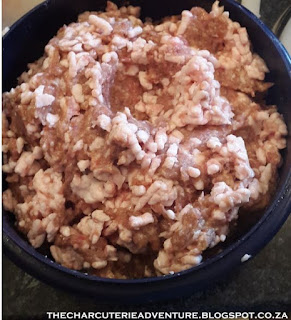 |
| Blend before final mincing (its ±40% fat) |
You now mince this batch through your 5mm mincing plate. This leaves you with a rather white and horrid looking mix (through the Kenwood it looked like white slop):
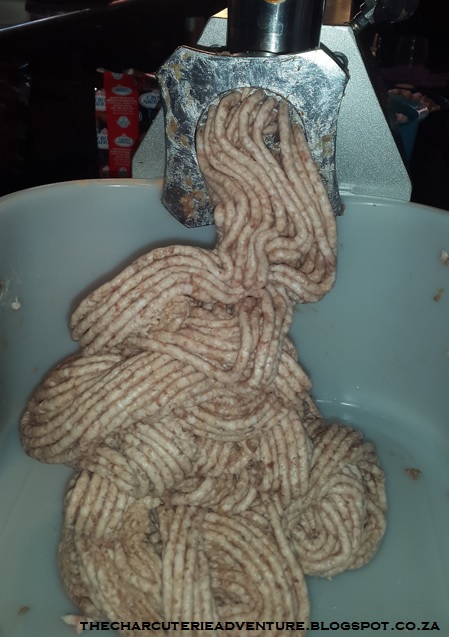 |
| Final mix before stuffing |
Stuffing, setting, smoking and drying
Its now time to stuff this lot into sheep skin casings:
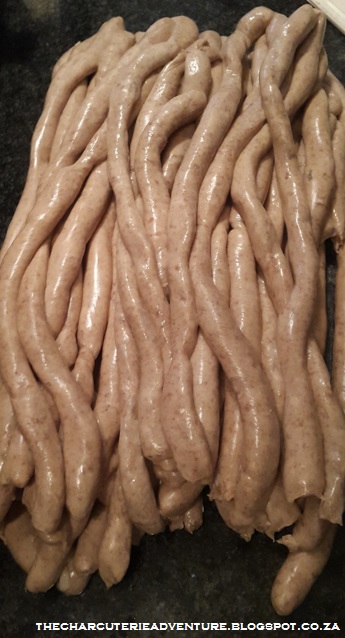 |
| Cabanossi before colour setting in on curing |
After stuffing, put into a closed container in the fridge overnight to help giving the curing agents a chance to get active then into your cold smoker for around 3 hours.
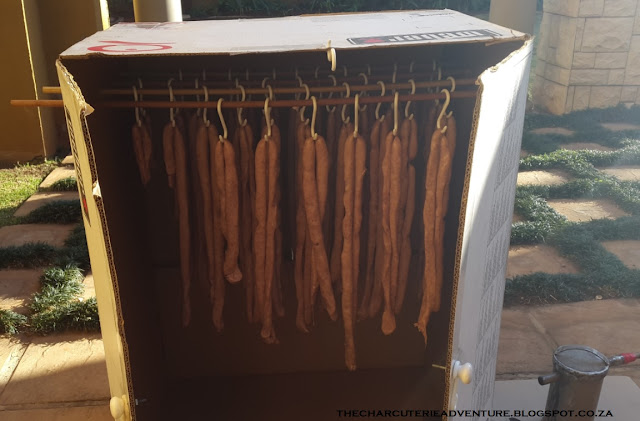 |
| Cold Smoking for 2,5 to 3 hours (Smoked with European Beech) |
After smoking, hang in your biltong drying cabinet. It will take about a week to ten days to cure and dry. The colour shall start going pink after a day of drying. This was a huge relief first time round. When done the skin should crack when bitten or bent and the inside should have a wonderful cured texture and not taste "fatty" on your pallet; this is due to the change the fat undergoes during curing.
 |
| Colour starting to set in after 24 hours hanging |
When drying and curing, keep your temperatures fairly low; not much above 20°C. This gives your sausage time to cure while drying.
Colour changes
On my first round the fat got slightly over worked and made the initial sausage much whiter than this batch. This was scary as I thought I had wasted a huge amount of time and money.
Fortunately this was not the case. The sausage starts pretty white / bland coloured. There is no change over night in the fridge. There is little to no change when cold smoking. The colour only really starts to set in and go pink after approx 24 hours of hanging and drying. The colour improves over the drying process and the lovely dark pinky brown is only there at the end.
 |
| Colour change after 1 week |



